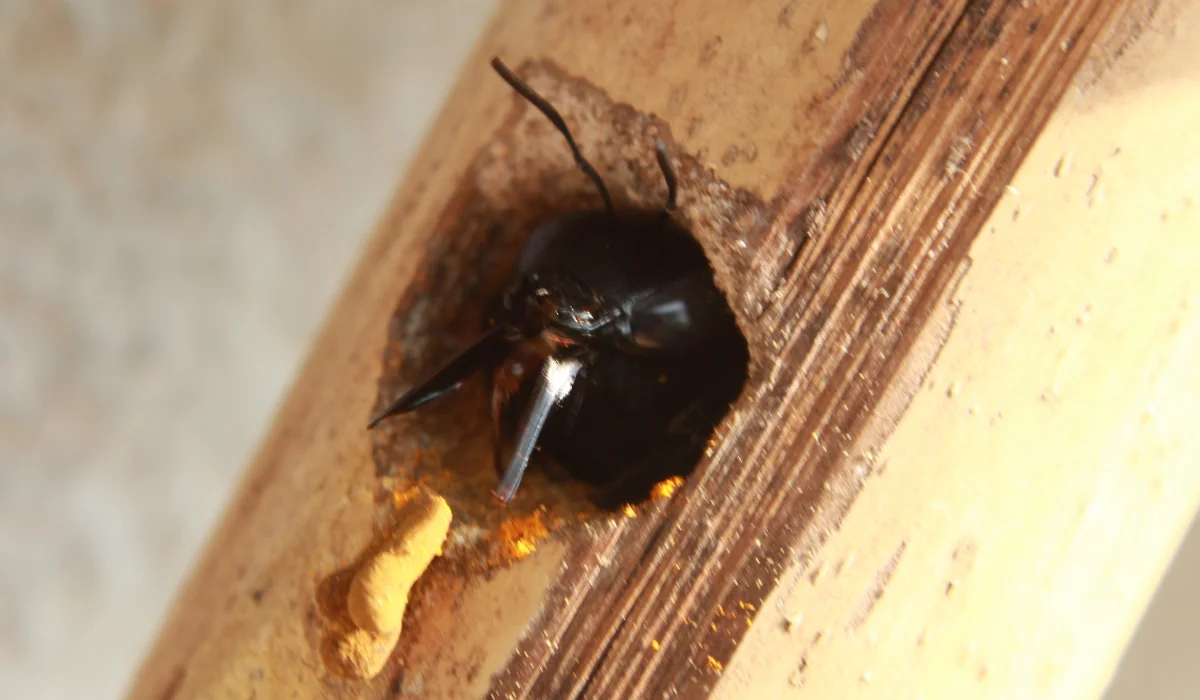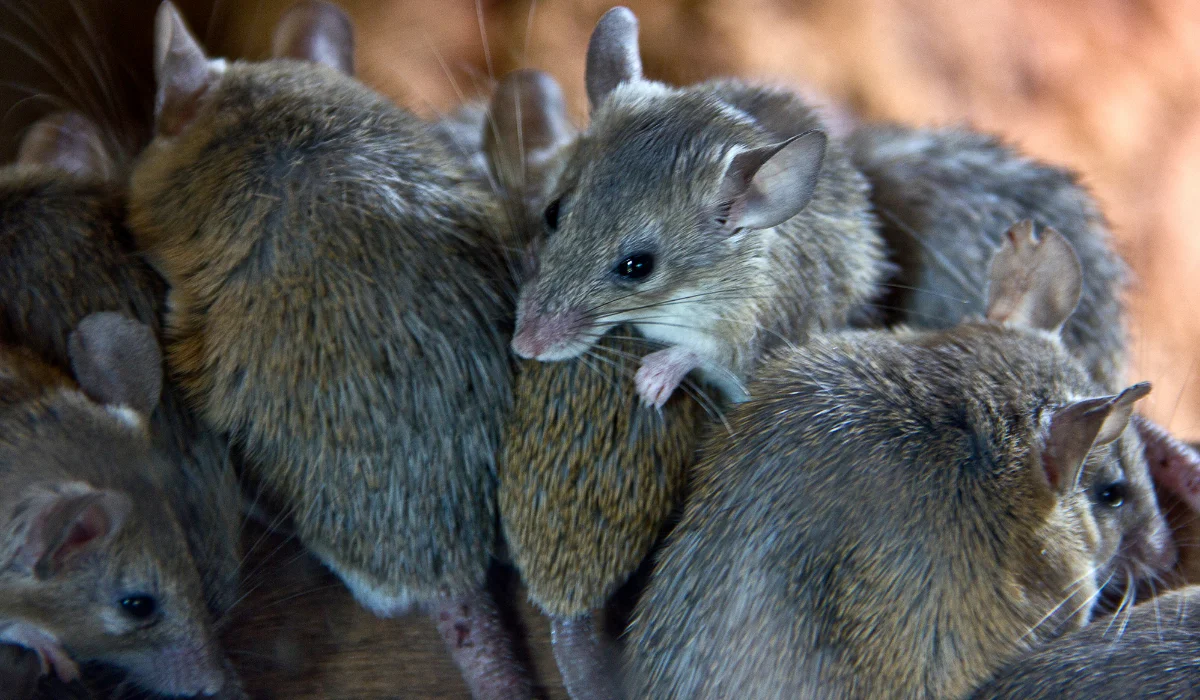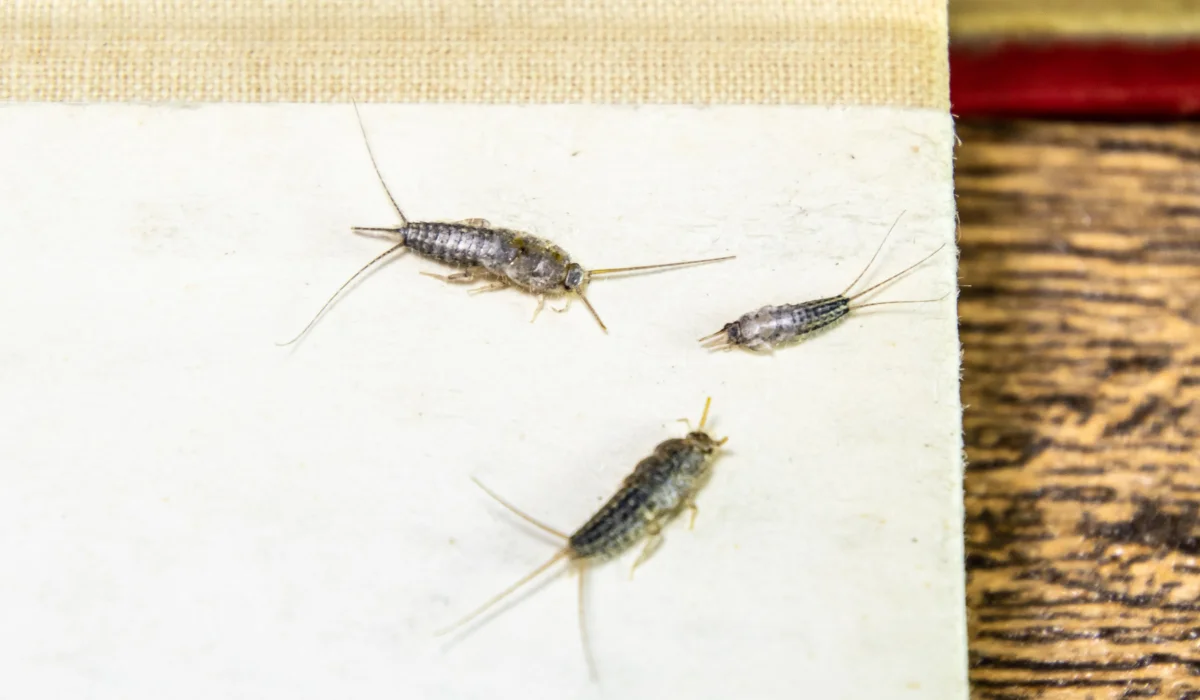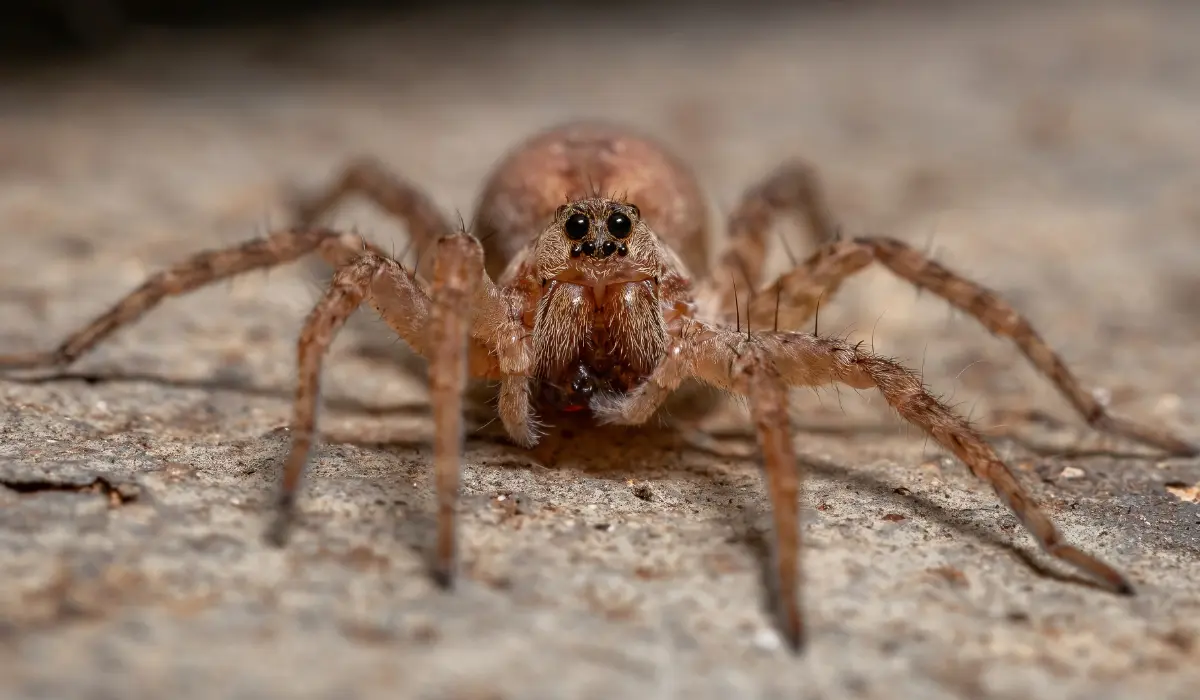Carpenter bees are a familiar sight in Louisiana, particularly in the spring and early summer. These large, solitary bees are often mistaken for bumblebees due to their size and buzzing, but they have distinct nesting habits.
While bumblebees nest underground, carpenter bees tunnel into wood, often around your home. If you’ve noticed perfectly round holes in your deck or fence, or fine sawdust below, you’re likely seeing signs of carpenter bee damage and nesting in Louisiana.
In this guide, we’ll explore where carpenter bees nest, what attracts them to your yard, how to recognize the signs of an infestation, and how to protect your home using effective pest management strategies.
Key Takeaways
• Female carpenter bees bore into untreated wood to create nesting tunnels for their young.
• Common nesting areas in Louisiana include decks, fences, soffits, and playsets.
• If left unchecked, carpenter bee activity can lead to severe structural damage.
• Professional pest control can prevent repeated infestations and protect your home’s integrity.
What Are Carpenter Bees?
The eastern carpenter bee (Xylocopa virginica) is common across the southeastern United States, including Louisiana. They’re among the largest native bees, with females featuring a shiny black abdomen and powerful jaws known as mandibles. These mandibles help them bore into wood to lay eggs and create tunnels.
Unlike social honeybees, carpenter bees are solitary. Each female builds her own nest and raises her young inside. After laying eggs, she seals off chambers in the tunnel where the eggs develop into larvae, pupae, and eventually emerge as adult bees, completing their life cycle within the wooden tunnel.
They can become dangerous to people when they sting, but females rarely do unless provoked.
Where Carpenter Bees Nest in Louisiana Yards
You’re most likely to find nests in areas with exposed wood, especially untreated or softwood. Common nesting sites around Louisiana homes include porch railings, fence posts, soffits, eaves, pergolas, and even wooden patio furniture.
Weathered structures that haven’t been sealed or painted are especially vulnerable. In cities like Baton Rouge and Houma, homes often feature wide porches and decorative trim, ideal spots for carpenter bees looking to set up their nesting tunnels.
Why Louisiana Homes Are Vulnerable
Louisiana’s warm, humid climate supports a long bee season, and homes with native plants and plenty of flowering shrubs naturally attract pollinators. While carpenter bees contribute to pollination and are considered native bees, their nesting behavior can create costly problems for homeowners.
Once they find a good spot, female carpenter bees return to the same location year after year, expanding their tunnels and increasing the risk of damage. This repetitive nesting can weaken structures and lead to costly repairs. Over time, even a small infestation can compromise the integrity of a wooden structure, especially if left untreated.
Signs of a Carpenter Bee Infestation
Carpenter bees leave behind distinct evidence. Look for round holes, about the size of a dime, along wood surfaces. You may also see coarse sawdust on the ground or yellowish staining below the holes. Males often hover near nesting sites, acting territorial, though they’re harmless since they lack stingers.
Males often hover near nesting sites, acting territorial, though they’re harmless since they lack stingers. They’re sometimes mistaken for wasps due to their hovering behavior and loud buzzing, but their nesting habits are very different.
Over time, repeated tunneling and weather exposure can hollow out beams or rails. Sometimes, the damage draws attention from predators like woodpeckers, who’ll peck into the tunnels searching for developing pupae.
How to Prevent Carpenter Bee Nesting
The best prevention starts with wood maintenance. Painting or staining all exposed wooden surfaces makes them far less attractive to female carpenter bees. Using hardwood or pressure-treated lumber for outdoor projects also deters nesting. If you spot old nesting holes, plug them with wood filler and paint over them to block reentry.
Removing existing nests before late summer helps prevent newly emerged adult bees from returning to the same area to overwinter.
Safe and Smart Pest Management for Carpenter Bees
Dealing with carpenter bees requires a thoughtful pest management approach. At LaJaunie’s Pest Control, we use non-invasive methods to remove bees and treat your home to prevent further nesting.
We understand that carpenter bees play a role in pollination, so we focus on protecting your home while minimizing harm to Louisiana’s beneficial bee species.
Simply call us, and our trained technicians will inspect your home for activity, identify entry points, and apply targeted treatments to deter new nesting. When necessary, we use professional-grade pesticide products in specific areas to eliminate active infestations while safeguarding your family and pets.
FAQs
Are carpenter bees dangerous to humans?
Not usually. Only females can sting, and they rarely do. Males can be aggressive, but don’t have stingers. Most of the concern is about the damage they cause to wood structures.
How long do carpenter bees stay active in Louisiana?
They’re most active in spring and summer. After emerging and mating, females tunnel and lay eggs. By late summer, new adults appear and prepare to overwinter in the same tunnels.
Can I treat a carpenter bee infestation myself?
You can plug holes and paint exposed wood to deter nesting, but treating an active infestation often requires help. LaJaunie’s Pest Control offers expert solutions for homes in Baton Rouge, Thibodaux, and across South Louisiana.
 By: LaJaunie's Pest Control
By: LaJaunie's Pest Control 



